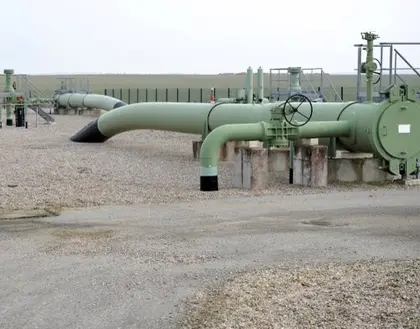France and Spain on Wednesday, Nov. 23, lambasted the European Commission’s proposed price cap on wholesale natural gas, set so high that critics have questioned if it would ever be used.
The EU executive on Tuesday, Nov 22, unveiled a gas “safety ceiling” of 275 euros per megawatt hour as the bloc grapples with high energy prices spurred by Moscow’s war in Ukraine and supply cuts.
But the conditions meant the cap would only kick in when EU gas prices breach that threshold for two weeks running, calculated on advance purchases through the bloc’s main gas price benchmark, TTF.
The cap was also contingent on the TTF price for liquefied natural gas — an easily transportable form of gas that can be shipped worldwide — exceeding 58 euros for 10 days within that same two-week period.
The only time the TTF gas price has gone above the 275-euro limit was between August 22 and 29 this year.
It was running at around 120 euros in trading on Tuesday.
Spanish ecological transition minister Teresa Ribera called the commission’s proposal a “joke”, saying it would cause steeper price hikes and hamper efforts to tame decades-high inflation.
The French energy transition ministry criticised an “insufficient” scheme that “does not respond to the reality of the market”.
“The commission must propose an operational text, not simply a text that is political grandstanding and may have negative or no effects,” it said.
Spanish Prime Minister Pedro Sanchez has also expressed his opposition to the plan, with Ribera saying most EU members were against it as the bloc’s energy ministers prepare to meet on Thursday.
Spain could stop supporting other proposals on matters important to the commission if another “serious” text is not forthcoming, Ribera added.
A commission spokeswoman said the mechanism was designed “to anticipate and prevent this situation happening in the future”, but admitted even August’s price spike would not have triggered it.
The cap, if adopted, would come into force in January and came after months of wrangling between EU countries.
It runs alongside a plan by member states to voluntarily cut natural gas use by 15 percent over the northern hemisphere winter.
You can also highlight the text and press Ctrl + Enter



